
They enjoy cool temperatures in their natural habitat, and have dense fur as a result. They also don’t sweat.
This combination makes them prone to overheating in captivity. And overheating can lead to death
Luckily, there is one easy way to recognize that your chinchilla may be overheating.
And that means you can step in and cool it down, before it becomes anything serious.
You can probably guess from the title of this article how you can tell your chinchilla is overheating.
That’s right! When a chinchilla is getting too hot, it’s ears will turn red.
Keep reading to learn exactly why a chinchilla’s ears turn red when it is feeling hot.
We’ll also cover what you need to do to bring its temperature down and how you can prevent your pet from overheating again in the future.
Contents
Why Do Chinchillas’ Ears Turn Red?
Chinchillas release heat through their ears. This can cause the veins to enlarge and the skin on the inner ear to appear pink or red.
Chinchillas release heat like this because they have extremely dense fur and they can’t sweat.
If you notice your chinchilla’s ear have turned red, that is a sure sign it is overheating. You need to act quickly. The good news is it’s not something you need to be frightened over.
It’s an easy issue to fix. And we are lucky that our chinchillas give us this physical sign that they may be overheating. It allows us to remedy the situation before it gets serious.
😕Adopting and caring for a new chinchilla can be intimidating and confusing. But it does not have to be.
Be sure to check out my full digital eBook “Avoiding Critical Mistakes: Ultimate Chinchilla Care eBook” for the best advice, tips, and tricks and supply recommendations to make adopting and caring for a chinchilla much more comfortable and easier to understand.
You can learn more about this eBook offer using the link directly below.
Learn more here:👉 Avoiding Critical Mistakes: Ultimate Chinchilla Care eBook Offer
What To Do When A Chinchilla’s Ears Turn Red
As stated above, your chinchilla’s red ears can be a telling sign that it is too hot. Chinchillas do not possess the ability to sweat, like many other animals.
Also, a chinchilla’s fur is extremely dense, with over 80 hairs per follicle. This makes overheating that much more likely.
Since your chinchilla can’t sweat, it releases heat through its ears. When that happens, you can see the veins enlarge and the skin on the ears may turn pink or red.
This is an indication that you need to cool your chinchilla down one way or another.
As soon as you notice the red ears, you should spot check the temperature in the room where your chinchilla is and make it is under 70 degrees and over 50 degrees.
Once you start passing 75 degrees, you run the risk of your chinchilla overheating and potentially even passing away. Chinchillas simply just can’t handle heat and humidity well.
They aren’t built to do so. In their natural environment, they deal with very little rain and very mild temperatures. That is the type of environment they need in order to survive. Always be sure the room in which you keep your chinchilla is at the correct temperatures.
What Chinchilla Ears Look Like And How To Keep An Eye On Them
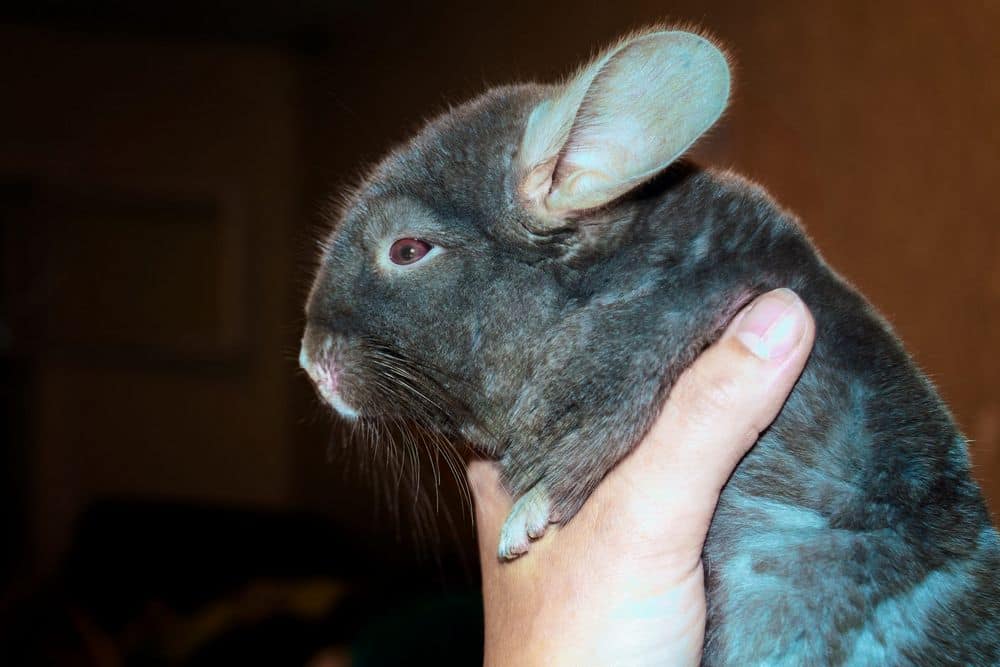
Ears that have turned red can be very easy to spot with some chinchillas, but much more difficult with others. It depends on which color your chinchilla is.
If your chinchilla has a light-colored inner ear, the redness is easier to identify. You should have no problem noticing if the veins become more dilated. You should also be able to spot the overall pinkish-red color easier.
But it you have a chinchilla with a darker inner ear, you may have more trouble noticing if the ear has begun turning red. The same goes for other ear issues, like chinchilla dry ears.
If this is the case, it is even more imperative to ensure you always keep the room in which your chinchilla lives at proper temperatures and that playtime is never too wild or crazy.
Another factor that can make it difficult to see the inside of the ears is when they are laid back.
This can be perfectly normal, but it could also indicate a serious issue. Read “My Chinchilla’s Ears Are Down” for more on the possible causes and what to do about them.
How To Prevent Overheating And Red Ears
Now that you know red ears are usually caused by overheating, you need to know what to do when you notice your chinchilla’s ears have turned red. This will also help you prevent overheating in the future.
First and foremost, if your chinchilla begins showing signs of overheating, like having red ears, it’s time to end playtime or any other physical activity, if that is what your chin is doing when you spot the issue.
Second, you need to get ahold of your chinchilla and feel its ears to ensure that they are in fact just hot and need to cool down.
Because a chinchilla’s ears may also turn red if they are in deep sleep or just resting.
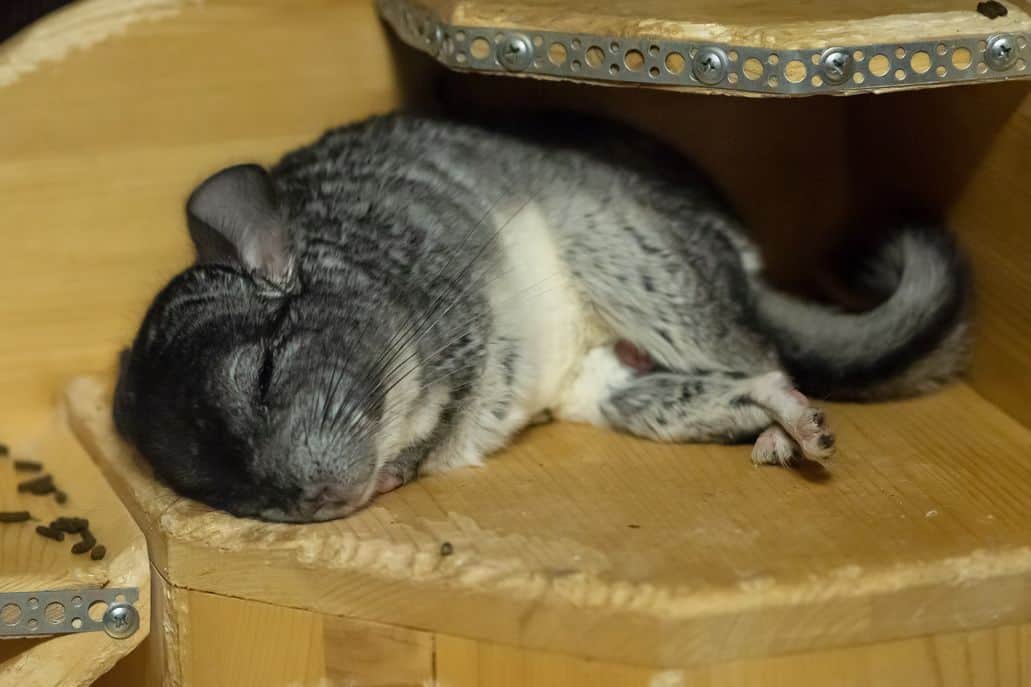
Additionally, some lighter colored chinchillas appear to take on more of a reddish or pinkish tint on their ears more easily and more frequently than most darker chinchillas.
Double-checking to see if you can feel any heat will help narrow down the cause of the issue.
Next, once you have confirmed your chinchilla’s ears are red due to overheating, grab a damp cold cloth and gently touch to it to the ears to cool them down.
It is also a good idea to give your chinchilla a granite stone like this one inside the cage.
- Made of granite stone to keep chinchillas cool and healthy
- Can be placed anywhere inside chinchilla's home
- 6-Inch long, 10-inch wide
Your pet can sit on the stone and cool down whenever it feels too hot.
Also make sure your chinchilla has plenty of cold water and nobody is exciting it and making it jump, climb or otherwise be active, so you can bring its body temperature back down.
If you are struggling to get ahold of your chinchilla or you are new to owning a chinchilla, refer this article on the base of tail pickup technique for assistance.
You can also read my post about how to get your chinchilla to enjoy being held. And lastly, be sure to read my post about how to get your chinchilla in and out of the cage.
It’s the easiest way to get ahold of your chinchilla, if it continues to run away or hide from you in dark corners, nooks and crannies.
Make Changes To Prevent Future Recurrences
Since I’m not aware of the exact circumstances that may have placed your chinchilla in a state of overheating, it’s hard for me to narrow down what may have caused it and how to fix it.
I can, however, try and touch on several items to help you out going forward.
First and foremost, if the room is too hot, simply adjust the temperature. If that is not possible, move your pet to a different room in your home where you can ensure the correct temperatures.
If another family pet scared your chinchilla and caused it to run around and overheat, be sure to isolate the two animals, so this doesn’t happen in the future.
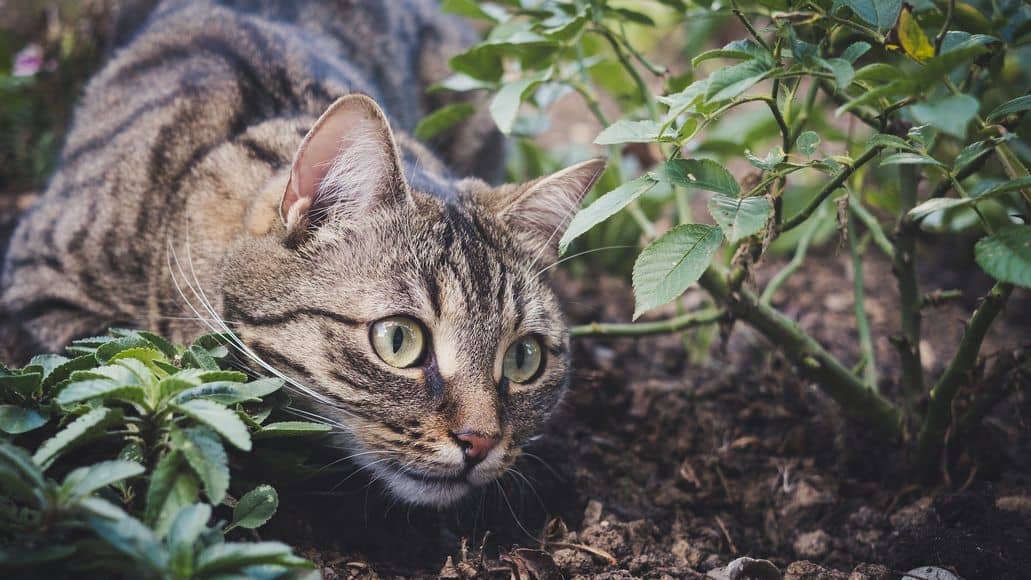
Sometimes other pets and chinchillas just don’t mix well, and you must adjust. Other time this isn’t the case, and pets like dogs and chinchillas can get along and intermingle without issues.
It just depends.
You could also consider a dehumidifier to keep humidity down in the room where your chinchilla sleeps, if high humidity is an issue where you live.
This can remove the sticky factor in the air and help prevent your chinchilla from overheating in the future.
You can also consider limiting the space your chinchilla has to use for playtime by using a chinchilla playpen.
I have a post breaking down the best chinchilla playpens here. I have personally been using the first choice in that post for the past 4 years and love using it for many different situations.
It creates a closer interaction for you and your chinchilla, eliminates the need to chinchilla proof the room, and will not allow your chinchilla to run around quite as freely, potentially causing overheating.
If you think that overheating due to having too much space during playtime is causing your chinchilla’s ears to turn red, be sure to consider the playpen approach.
Other Tips To Keep Your Chinchilla Safe And Healthy

The tips we have discussed thus far into the post should help a lot to keep your chinchilla safer.
The temperature of the room alone is probably the most significant factor to keep in mind outside of worrying about the wires and other dangerous items your chinchilla could chew on.
If your chinchilla overheated, don’t beat yourself up. It happens. Do your best, and as time goes on, you will become a better chinchilla owner.
Sometimes we just need some help and practice to get these things down. And don’t be afraid of moments like these.
They happen all the time. With all pets.
Chinchillas are friendly loving animals and incredible to own as pets.
I don’t want something like the potential of overheating to sway you into thinking chinchillas are too high maintenance to care for, because that’s 100% false.
They are perhaps one of the most relaxed animals to care for, if you want my honest opinion.
Don’t Use Fans And Don’t Get Your Chinchilla Wet If It Overheats
One additional piece of advice I have for you is to never to use a fan to cool your chinchilla down. Not only will this not work, but it can also make your pet very sick.
The air blowing on it will not be enough to cool it down, due to its thick coat of fur. The most likely outcome from blowing a fan at a chinchilla is either illness or no results at all.
Finally, do not get your chinchilla wet. Getting your chinchilla wet to combat overheating should be your absolute last resort.
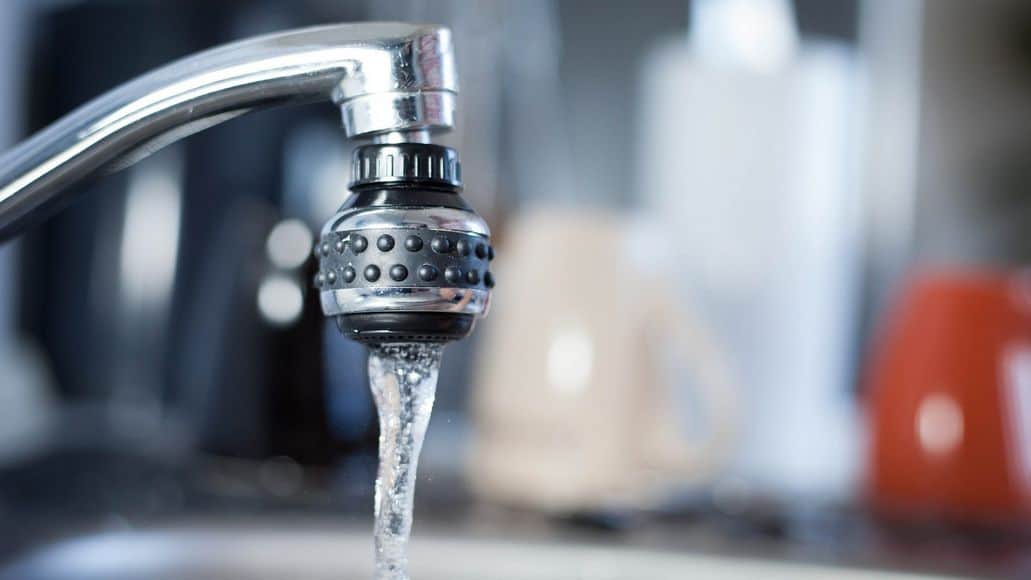
If you are at that point, then you can try it, but always try the other recommendations I have laid out in this post first.
Chinchillas take dust baths for a reason. Their dense fur does not dry adequately once it gets wet. This can lead to illness
It is best to just cool a chinchilla down by moving it to a colder room or using a damp, cold cloth to gently dab its ears.
Outside of these tasks, just sit back and keep an eye on your chinchilla.
Likely everything will be just fine, but it’s essential to learn from the issue and make the proper adjustments for the future.
Remember, chinchillas can live up to 20 years so learning the best practices is something you want to do now to make things much smoother down the road
Don’t worry, it gets much easier, and I assure you that you won’t have any regrets about being a chinchilla parent.
Chinchilla With Red Ears: Final Thoughts
Hopefully, this post didn’t scare you too much, because that certainly wasn’t the intention. I only wanted to let you know that a chinchilla’s ears turning red usually indicates overheating.
And I wanted to make sure you know what to do about that and how to prevent overheating as much as possible in the future.
It’s important you understand that your chinchilla’s ears turning red could indicate a potentially dangerous health issue, but that you can take quick action and prevent it from progressing to that point.
Stay calm, check the temperature of the room, and make the proper adjustments and everything will be just fine. If your chinchilla is overheating from activity, cease the activity.
Overheating is one of the few scares chinchillas are likely give you, so don’t hesitate to adopt one, if you are still on the fence.
Chili and I wish you the best of luck with your new chinchilla and the journey you have ahead of you.
Now we want to hear from you!
What is your experience with your chinchilla’s ears turning red?
What are your thoughts on the best practices concerning how to handle your chinchilla when you notice its ears have turned red?
Any further recommendations that I didn’t lay out in this post?
Be sure to share those thoughts, stories, and concerns by dropping a comment below.
As always, Chili and I appreciate you stopping by and reading today and we will see you again next time! And if you are looking for more information on chinchillas’ ears, check out our article on chinchilla hearing.
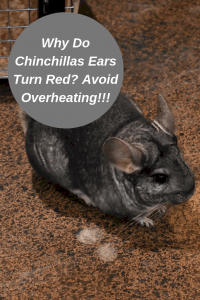

Leave a Reply